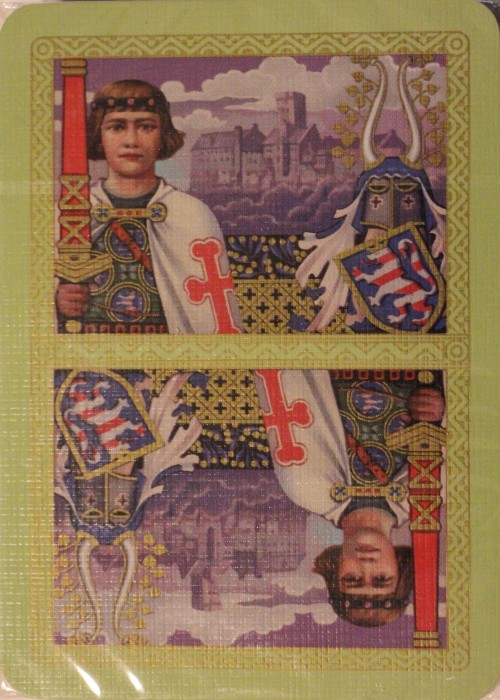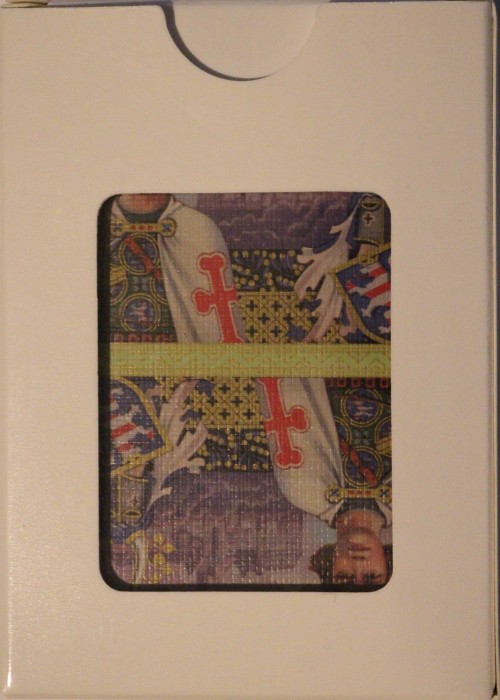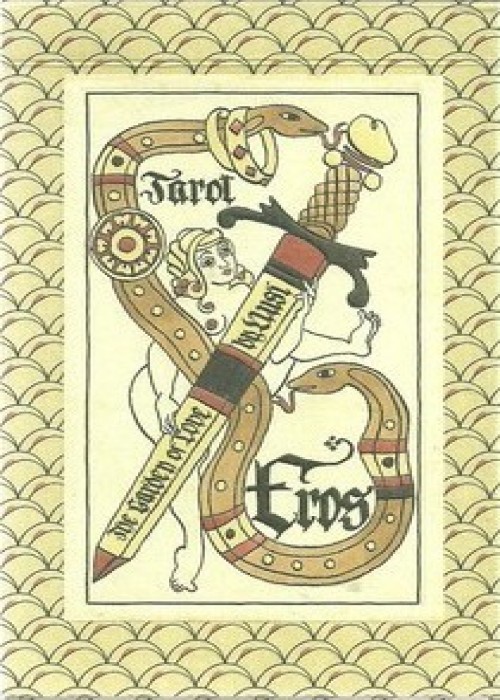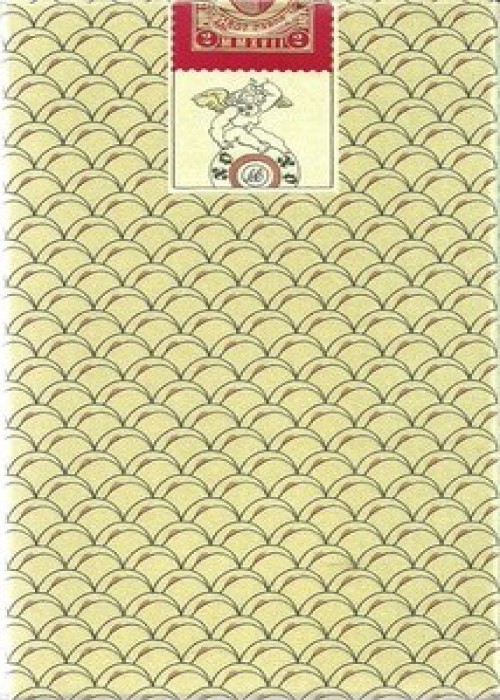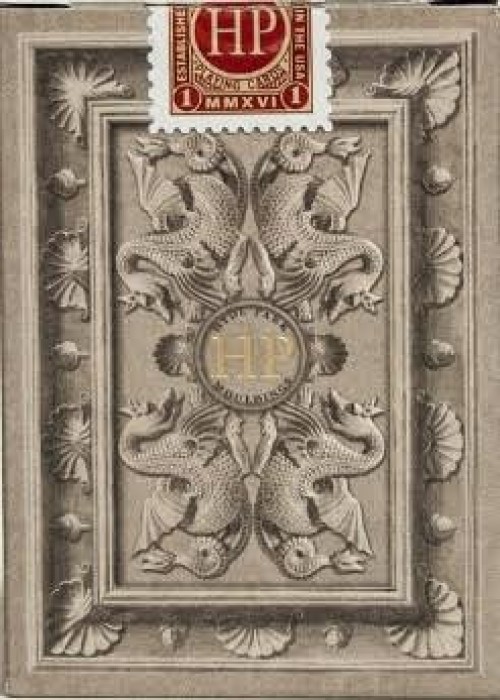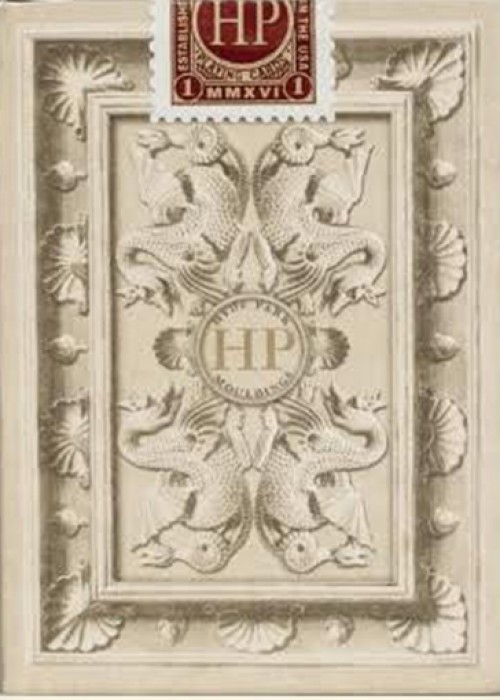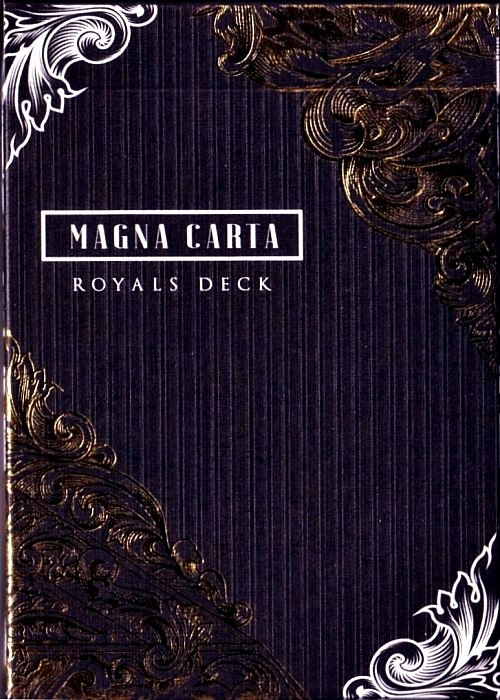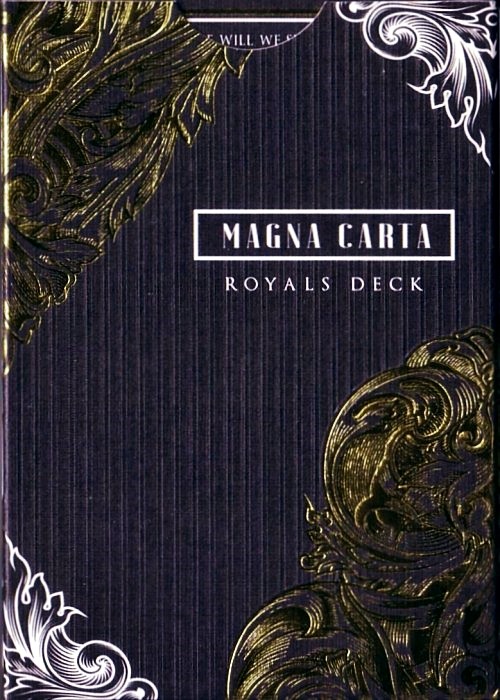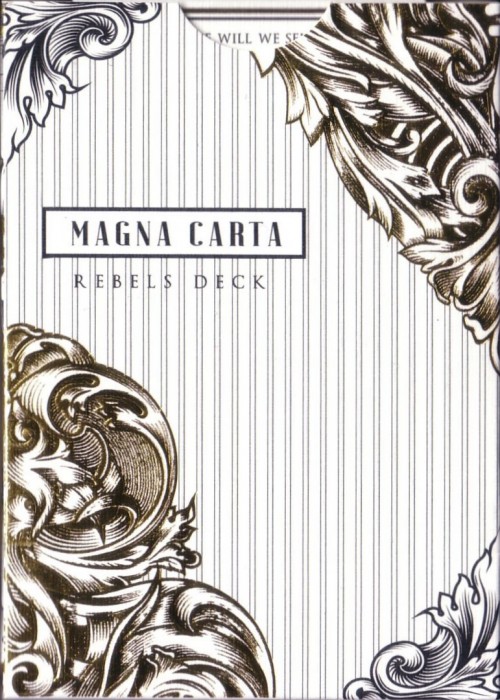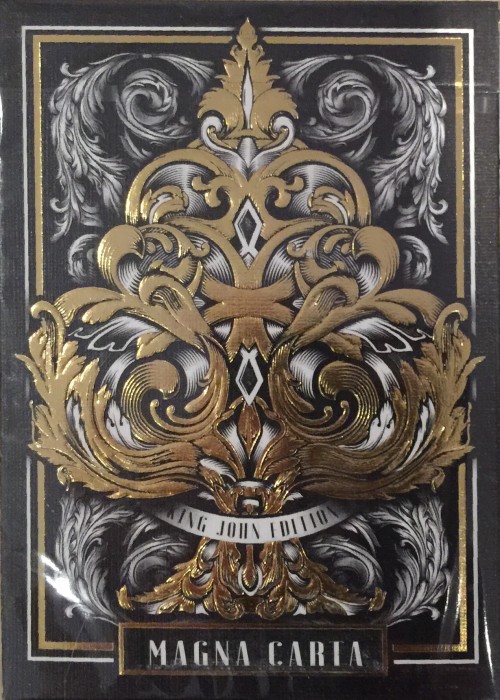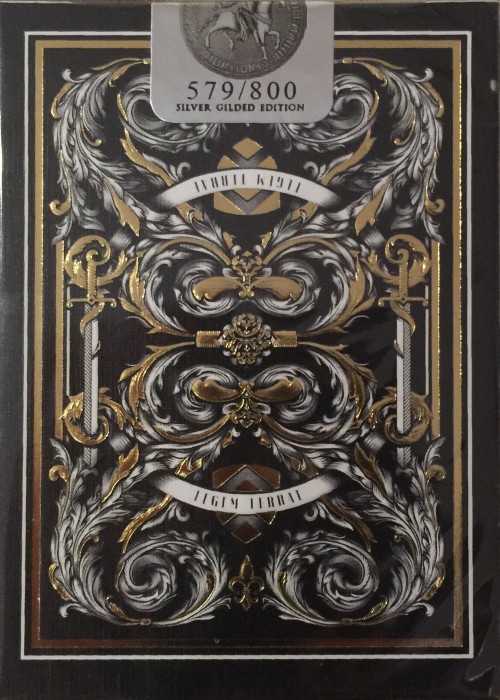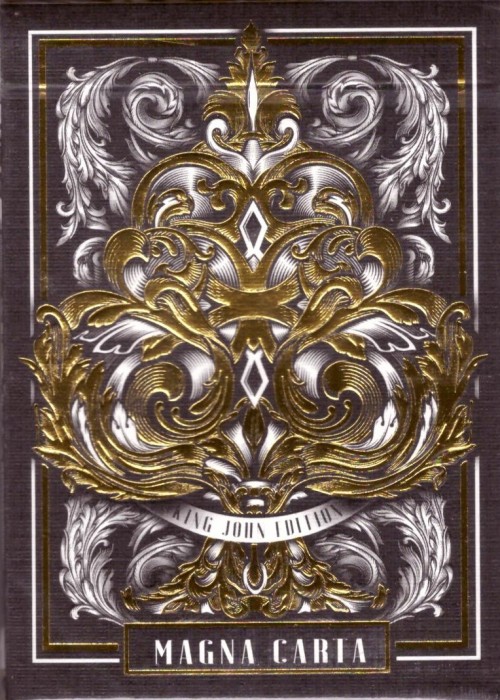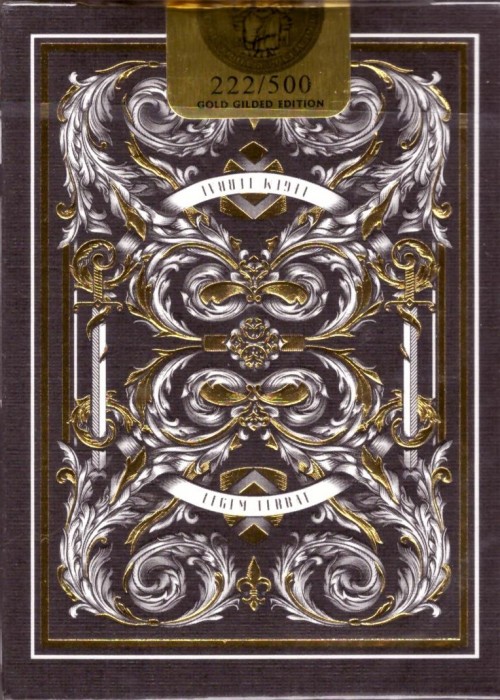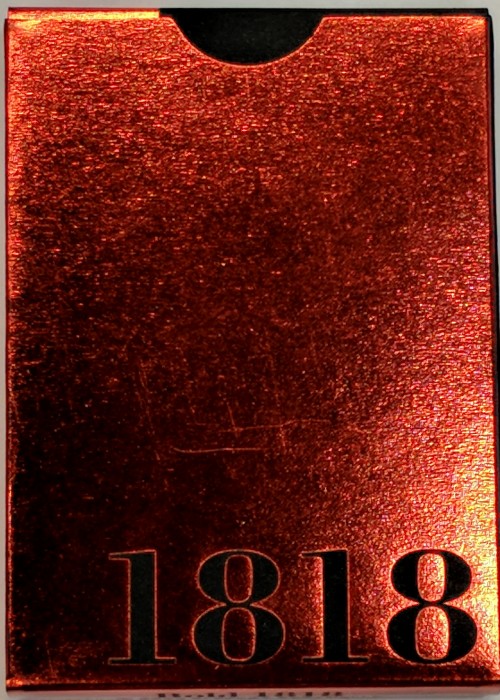Quoted from Dondorf "Hundertjahrkarte" playing cards restoration kickstarter page.
The restoration of the deck was masterfully crafted in Greece by Lotrek of Oath Playing Cards based on very hi-res scans of the originals and also on Weddingtons' reprint of the deck in 1975 under the name "Royal Gothic".
We stayed as true as possible to the original cards printed in 1933, but we changed the format from 6cm × 9,2cm to the modern poker size (6,3cm x 8,8 cm). The original deck had two identical Jokers. We're slightly changing the second Joker in the "Player's" deck to make it match modern playing requirements. The "Restoration" deck will have identical jokers, exactly like the original.
We have tried to compromise nothing at all in our restoration. Even the small insert in German like the original 1933 edition is included. Inside the dual tuck box, you will find this as well as a gold brocade "index" type divider used in this case to assist with the raising and removing the decks. Only the 3D buckle is rather impossible to reproduce exactly, so it will have to be embossed gold foil. We did translate the booklet to Anglicize it, also included.
A bit of History:
In 1833 Bernhard Dondorf opened his lithographic printing business in Frankfurt am Main. Always on the lookout for innovations in the graphic arts industry, Herr Dondorf began focusing on playing cards and eventually his business became the synonym for fine and luxurious playing cards.
In 1933 Dondorf GmbH was celebrating 100 years of history. For their centennial jubilee, they printed the "Dondorf Hundertjahrkarte" deck to give to attendees of the 100th anniversary celebration of the company. Ironically, at this time the Dondorf business was in the process of being taken over by Flemming & Wiskott. Designed and produced during difficult economic circumstances, these decks was quite an achievement for the time and particularly expensive to print. They were made utilizing chromolithography and they required 28 stones (the era's equivalent to modern printing plates). 12 color stones were used for the backs and 16 for the faces. At that time, "Dondorf Hundertjahrkarte" deck was the most elaborate deck ever created.
The original decks were given to customers attending the Jubilee in 1933, so they have never been available for retail sale. The cards measured 6.2cm X 9cm -similar to modern bridge size. They had metallic gold accents both on the faces and the back. The mood inspired by the Middle Ages was serious and heroic, intending to suggest the power and virtue of the German character. The courts' artwork was extremely detailed, obviously executed by a true master:


